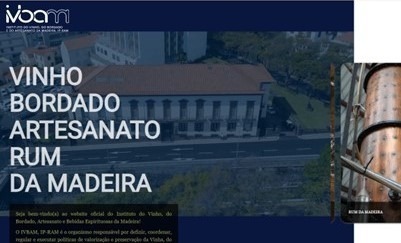Madeira
Blandy’s Malmsey NV 10-Year-Old Doce/Rich Madeira Portugal
Founded in 1811, the family-owned and run Blandy’s is one of the oldest and most respected producers on the island of Madeira. The island, technically an autonomous region of Portugal, is situated in the Atlantic ocean to the west of Morocco and is famous for the fortified wines that bear its name. The wines are made from a number of varieties: Malmsey, also known as Malvaisa, is perhaps the most famous of the noble white varieties used and typically grows in the cooler, wetter north of the island. Once harvested, the grapes are fermented using natural, ambient yeasts in temperature-controlled tanks and then fortified to stop further fermentation at the desired level of sweetness. This particular wine is categorised as “Doce” or rich, the highest of the sweetness levels. It contains 123 g/l of residual sugar (to put that in context, table wines can have up to 4 g/l to qualify as “dry” according to the EU, whereas PX sherry can have between 400-500 g/l).
Post fortification, the wine is aged in small oak casks in the traditional “Canteiro” system used for higher quality wines. This process, peculiar to the island, sees the wine kept in a hot, humid and oxidative environment that produces the characteristic deep colour and concentrated flavours. In addition, sugars in the wine caramelise during the process which, in the best wines, is matched and balanced by fresh acidity - all adding to the extraordinary profile on display. Age-indicated Madeiras come in 15, 20, 30, 40, 50 and “> 50” years old in addition to 10s and younger 5 year olds. All are bottled ready for drinking so no use buying a 5 year old and waiting – it’s not the bottle environment that’s key to development (unlike Vintage port that’s quite happy maturing at the back of your cellar).
A beautiful bronzed amber colour, the predominant aromas here are dried fruits (raisins, prunes, dates and apricot) together with marmalade tones – a relatively light burnt-sugar marmalade like Fortnum and Mason’s Sir Nigel's as opposed to their citrus-forward Burlington Breakfast. There’s a distinct nuttiness too – waxy Brazils and walnuts – that works very nicely with the caramel undertones. There’s also an elusive fragrance, something like basmati rice.
The palate is less showy, with floral notes under the predominant fruit ‘n nut. It’s a full-bodied wine, with a certain oily weight to it, but its conspicuously high acidity balances this richness. There’s a little texture here too, more so that say a smooth and unctuous PX sherry. The finish is complex and long, evolving across the mouth for quite some time. It resolves first into barley sugar warmth and then into a, not unpleasant, vegetal note that most closely resembles celeriac (a light, green, earthy liquorice). There’s a little dry note at the very end that makes a surprising and welcome palate restorer.
This is one of a few wines that can stand up to the onslaught of the Christmas pudding/mince pie brigade (cf my Great Christmas Pud Conundrum for Falstaff). But it would be a shame to save it only for Yuletide: it also goes well with chocolate-based puds, fruit cakes and cheese, especially blues and those with a nutty profile like aged Alpines.



